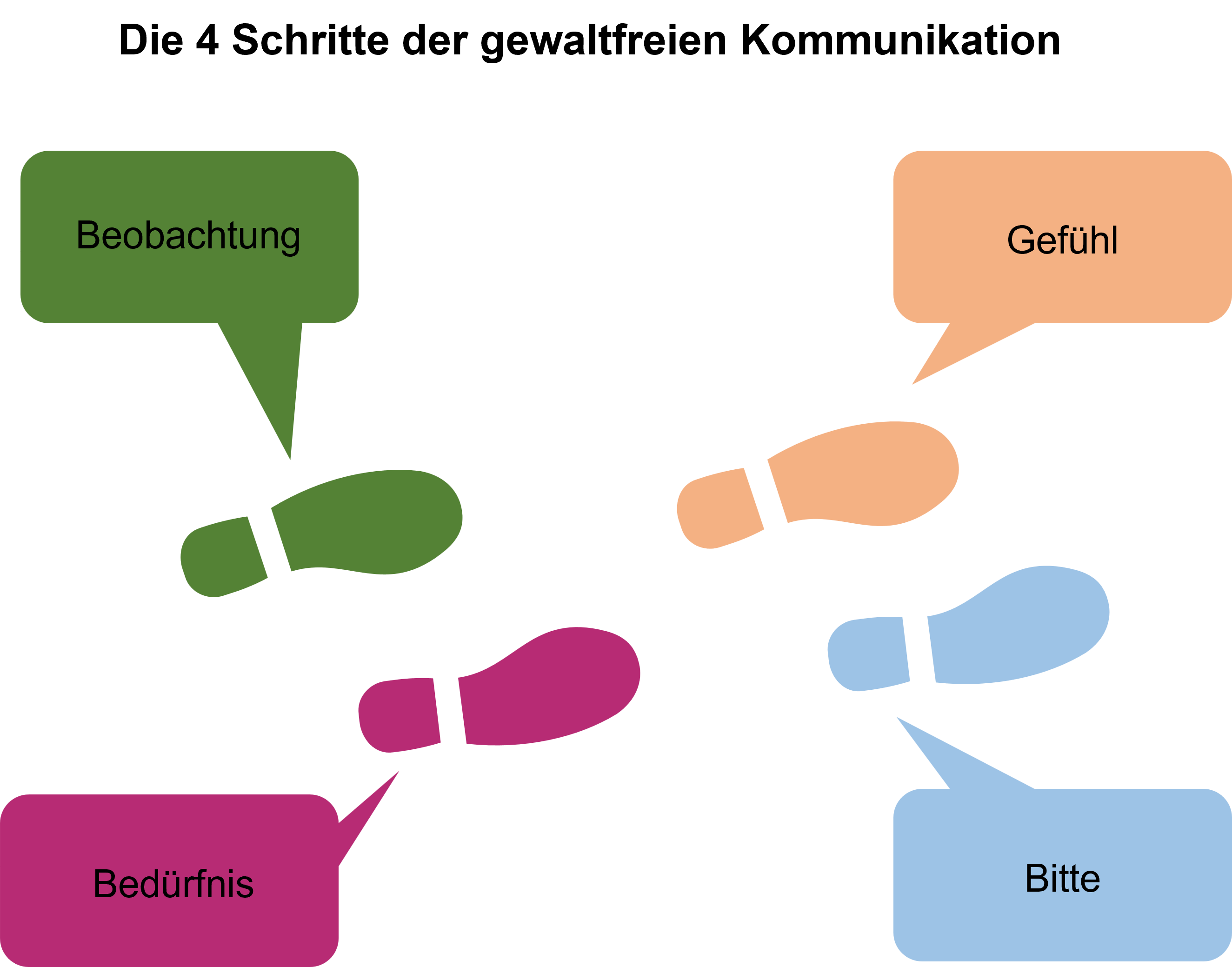Nonviolent Communication
Harmonious Conflict Resolution in 4 Steps
Nonviolent Communication
Nonviolent Communication
There are many ways to communicate with others. One is verbal communication, and the other is nonverbal communication. The latter includes both facial expressions and gestures.
Verbal Communication
Verbal communication involves using language to communicate with others. This includes written communication and sign language. This type of language is used consciously.
Nonverbal Communication
Nonverbal communication involves conveying messages through body language, such as facial expressions and gestures. Unlike verbal communication, nonverbal cues are often used unconsciously.
What is Nonviolent Communication?
Even though everyone intuitively knows how to communicate, talking with others isn't always easy. In conflict situations, it's wise not to get worked up or let the other person provoke you. But that's easier said than done.
To help with communication, Marshall Bertram Rosenberg developed the concept of Nonviolent Communication (NVC). Let's take a closer look at the basic model.
Marshall B. Rosenberg
Marshall B. Rosenberg was a U.S. psychologist and successful mediator. In the 1960s, he worked with civil rights activists and used his communication seminars to help communities change perceptions about racial segregation. In 1984, Rosenberg founded the "Center for Nonviolent Communication" to make NVC accessible to everyone.
The Basic Model of NVC
Nonviolent Communication helps you listen attentively and empathetically to others and express your own viewpoint honestly. It's not about both parties using NVC. It's about becoming aware of the other person's needs and your own empathy.
The basic model of Nonviolent Communication consists of 4 steps:
- Observation
- Feeling
- Need
- Request

Observation
The first step is describing the facts. We state clearly what the conversation is about. Evaluation, interpretation, or needs are not relevant. This promotes open and clear communication.
Feeling
In the second step, feelings are named. What feelings does the observation trigger in us? Again, this is done without judgment.
Need
The third step involves needs. What needs arise from our feelings? What do we and our conversation partner need?
Request
The last step is about the request. Here, we clearly communicate our request. It also involves recognizing the other person's request. The goal is to find solutions that meet the needs and requests of both sides. We should ask ourselves what we want to request from our conversation partner and what we are willing to do.
Marshall B. Rosenberg summarizes his basic model as follows:
"When I see a (Observation), I feel b (Feeling) because I need c (Need). Therefore, I would like d (Request)."
Example
Let's illustrate this basic model of Nonviolent Communication with a concrete example:
Hannah and Peter are colleagues sharing an office. They work well together and get along personally. But one thing bothers Peter. Hannah eats a yogurt every day but doesn't throw away the empty cup. After four days, there are four empty yogurt cups on the desk. This annoys Peter so much that he yells at Hannah: "I've had enough! Throw your disgusting yogurt cups in the trash! It's gross!" Hannah is so shocked by Peter's outburst that she starts crying and runs out of the office.
This conversation didn't go well. Peter didn't want to lose his temper, and he certainly didn't want to hurt Hannah's feelings. How could he handle it better? Let's see how the conversation could go if Peter used the basic model of Nonviolent Communication with Hannah:
"I've noticed several empty yogurt cups on the desk." (Observation)
"I find it unpleasant and unappetizing when these empty cups stay in the warm office for days." (Feeling)
"To work focused, I need a clean and tidy desk." (Need)
"Could you please throw away your empty yogurt cup right after you finish eating?" (Request)
With this approach, Peter meets Hannah's understanding, and their harmonious collaboration remains intact.
Conclusion
Of course, the basic model of Nonviolent Communication isn't a cure-all for every conflict conversation. However, it helps to stay calm, keep perspective, and present your point clearly and objectively.
By using the basic model of Nonviolent Communication, we can learn to build a respectful relationship with our conversation partner. Our communication style changes because we become more receptive to our own feelings and needs and better understand those of our conversation partner.
The NVC model can be used not only in conflict conversations but also preventively to conduct factual and constructive discussions that prevent escalation.
